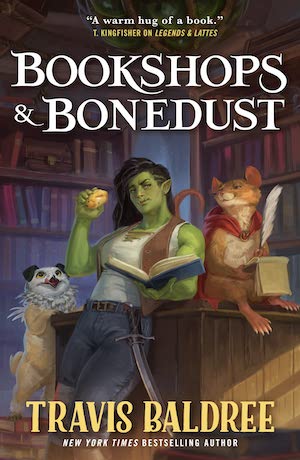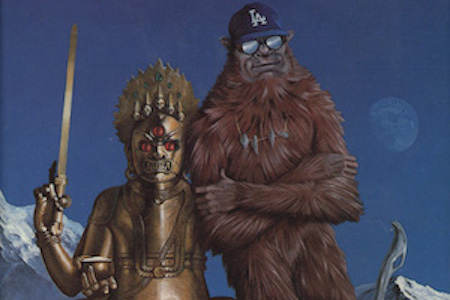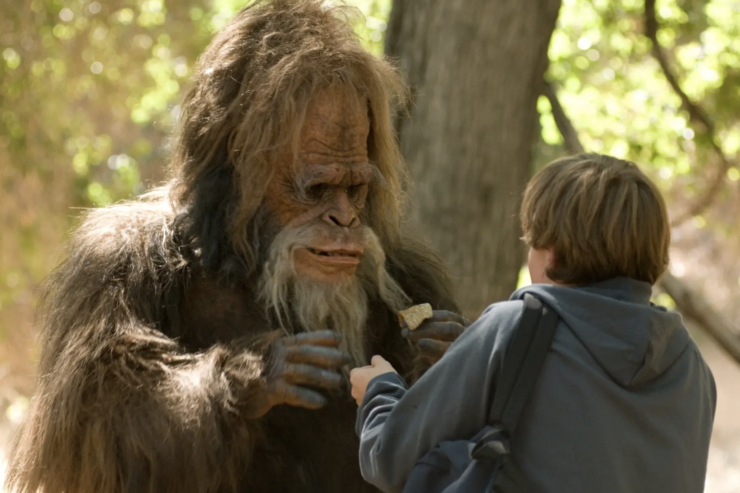After the Nordic darkness of The Merman’s Children, I’m in the mood for something light and frothy and not very complicated. Which is pretty much the definition of the Eighties romcom, Splash. Even the title is straightforward, one syllable, no muss or fuss. It anticipates the one-word-moniker trend in everything from restaurants to tv shows by decades. (I am still quite put out to have to call good old Masterpiece Theatre just Masterpiece. I mean. Come on.)
Splash is so Eighties. The hair. The chunky sweaters. The sexism. Upskirting as a running gag, haw haw. It will be a long time before Me Too becomes a thing.
It’s still a cute film, even with the winceworthy parts.
Adorable young Tom Hanks (in the role that launched him to stardom) and equally adorable young Daryl Hannah transcribe a shallow arc of love, loss, and inevitable Happy Ever After. The late John Candy burns his candle at both ends as the sleazy-but-lovable brother. Eugene Levy, not yet a film icon, transforms from villain to hero-ally as Dr. Kornbluth.
But we’re here for the mermaid, and that’s interesting because Daryl Hannah’s beautiful multifinned tail reads to this viewer as the direct ancestor of Halle Bailey’s version in the live-action Little Mermaid. It’s the same color and much the same shape.
The plot is much the same, too, with a few alterations. Twenty years before the Now of the film, a little boy on a ferry sailing away from Cape Cod is enthralled by the sparkle of water and falls off the ferry. He swims, grinning wildly, toward a pretty little blonde girl, and she catches his hands and holds him. But then a man dives off the ferry and pulls him away, and he goes back to his life on land, with brand-new fear of the ocean. He appears to remember the girl, but thinks he imagined her.
Fast-forward twenty years to 1984. Alan Bauer, upcoming young fruit and vegetable vendor in New York City, gets dumped by his live-in girlfriend, gets epically drunk and takes a cab all the way to Cape Cod in search of True Love. There he stumbles across Dr. Kornbluth and his two dimwitted assistants on their way to their research vessel. They immediately assume he’s a rival scientist come to spy on them. Alan hires a tiny wreck of a boat to get to the other side of the island. It dumps him in the ocean midway across.
Next thing he knows, he’s waking up on the sand, and a beautiful naked woman kisses him and flees into the water. He doesn’t see what happens, but we do (and so does one other important character): her legs turn into a mermaid’s tail, and she swims rapidly away. She pauses where Alan went overboard and finds his wallet; we see her scrutinize his driver’s license. (Never mind that she can’t speak English, but she can obviously read it, and she can read a nautical chart too, and find her way to the address on the license.)
It’s clear that this is the adult form of the little girl who rescued eight-year-old Alan. Next thing we know, a beautiful and very blonde, very naked woman appears on Liberty Island, causing a sensation. She doesn’t speak any English, but she has Alan’s wallet, with his name and address.
Alan has been dreaming fruitlessly about the woman who saved him. He’s startled to get a call from the police: they have a woman in custody for indecent exposure, and she has his name and address with her. Of course he races down to the station, and of course he recognizes her, though he has no clue that she’s a mermaid. She has legs on land, and she presents as a foreign national, probably an illegal immigrant.
She’s also gorgeous, and these are the Eighties—the very last gasp of the era of free love. He takes her home with him, and they immediately start having wild sex. He blows off work, he becomes a different person: happy, singing an old Disney tune (from a film that’s so egregiously racist it’s been pulled from circulation). Alan is in loooooove.
The mermaid names herself Madison, after the Avenue, and makes liberal use of Alan’s credit card to acquire a wardrobe. She learns English from watching television (which is actually a real thing—I have a friend who immigrated at that same time and learned English watching Star Trek reruns). She is clearly madly in love with Alan, and Alan with her, but she makes it clear that she can only stay for six days, until the moon is full.
She doesn’t say what happens after that, though we can guess. This is magic, and it has a term limit. She can only stay so long. Then she has to go back to the sea.
I don’t think we’re supposed to ask how her initial appearance figures in—when she first shows up on the beach. Is the actual spell a longer one? New moon to full? Does she use up a chunk of it tracking Alan down? Is this a one-and-done spell?
Buy the Book


Bookshops and Bonedust
Mainly it’s about keeping up the tension and making Alan all upset about wanting to get married—because if an immigrant marries an American she can stay—and her insisting she can’t stay. Until she stops insisting and says yes.
But the course of true love cannot run smooth, it’s against the love of romcoms, and Dr. Kornbluth has not only seen the mermaid in the waters off the Cape, he’s figured out who the naked woman in Liberty Island is. He’s been stalking her, with wildly slapstick consequences that result in his spending most of the film in a huge, winglike full-arm-and-shoulder cast and a cervical collar.
Any fan of cryptid-in-the-human-world films (also aliens and magical beings) knows what has to happen. Evil Government Forces capture the mermaid and sweep her off the their Evil Science Lab, along with Alan, whom they dunk into a tank alongside her in the belief that he’s a merman. Which he is not, and he finally talks himself out of the tank and is turned loose (really? with what he knows?). But Madison, they keep.
Amid all of this, Kornbluth, who has been cut out of the operation by his old dissertation advisor, has a change of heart. He realizes that the mermaid is a person, too, and that he’s done her wrong. He joins forces with Alan and Alan’s raffish brother Freddie and sets out to liberate the mermaid.
Madison by now is in terrible shape, skin sloughing off her beautiful tail, curled up and visibly dying. The intrepid allies scam their way in and rescue her, and off they go on a classic chase. Initially they think they’ve made a clean getaway, but then the Evil Government Troops come zooming in, and they’re off on the inevitable wild race to the ocean.
They make it, and Alan is all noble and full of sacrifice—but Madison says they don’t have to be parted. He can go with her. She can keep him alive under the sea, the same as she did twenty years ago.
He’s all ready to go, as long as he can come back and visit Freddie for Christmas. But, she says, he can’t do that. Once he goes with her, that’s it. It’s forever.
Alan has to choose. He chooses his brother. Until she dives in and starts to escape, and the black helicopter comes down and the Evil Government Forces close in.
That’s it. He dives in after her. And here we get the precursor of the scene in live-action Little Mermaid, when Prince Eric dives in after Ariel and helps her defeat Ursula.

Alan and Madison escape the Evil Government Forces and swim joyfully away. Cue Rita Coolidge crooning “Love Came for Me,” and an underwater montage, and at the end, the lights of a subterranean city. That answers the question of Madison’s origins, give or take a whole lot of worldbuilding.
(We will not mention that Madison’s people know nothing of music, which is a downright violation of the whole concept of the mermaid as sister to the Siren, and the Little Mermaid’s voice that plays a crucial role in the spell that makes her human, and… well. They had to make a major change somewhere, I suppose. Also, it makes for some mildly cute fish-out-of-water moments.)
We never will know how a lone, very young mermaid ended up off Cape Cod, though the song may be the answer. Love called, and the human boy and the baby mermaid answered. It took twenty years for him to find his way back, during all of which he never managed to be lucky in love. Because of course he couldn’t. He’d already found his True Love.
What the mermaid was doing in the meantime, we don’t know, though it’s clear she’s been growing up; also, glowing up. Alan’s ocean phobia has kept him firmly on land for the whole of that time. It’s only when he finally ends up back in the ocean that she can find him again. By magic? Pheromones? Who knows? All that matters, in this world, is that she does.
Judith Tarr is a lifelong horse person. She supports her habit by writing works of fantasy and science fiction as well as historical novels, many of which have been published as ebooks. She’s written a primer for writers who want to write about horses: Writing Horses: The Fine Art of Getting It Right. She lives near Tucson, Arizona with a herd of Lipizzans, a clowder of cats, and a blue-eyed dog.














